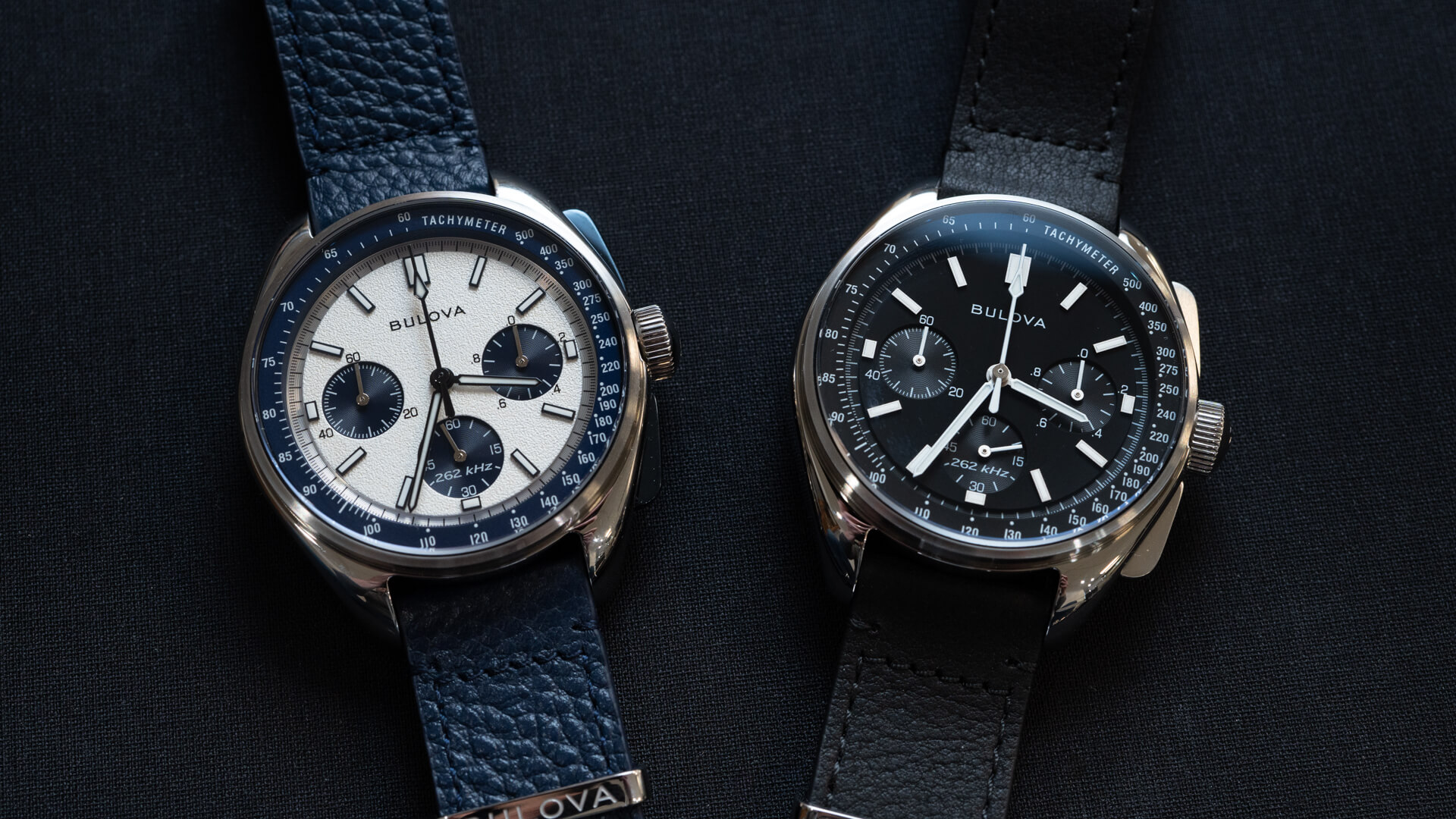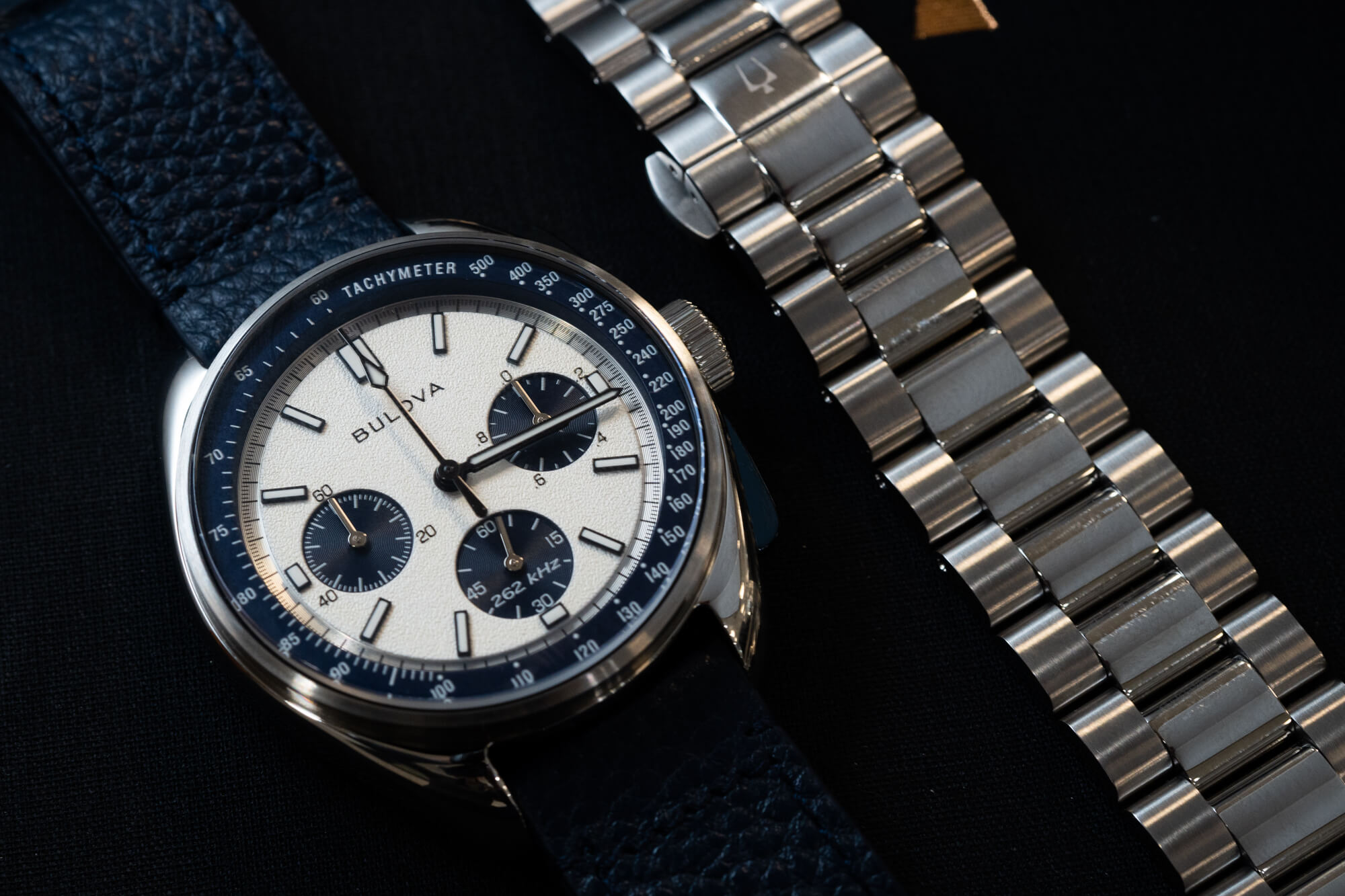
It’s important to understand that the horological landscape was quite different in the beginning of 2016, when the Bulova Lunar Pilot was first released. Specifically, the trend of brands poring over back catalogs and recreating old models was in its nascency. Timex hadn’t reintroduced the Marlin. Seiko hadn’t reissued the 62MAS. Tissot hadn’t revisited the PRX. Rado hadn’t remade the Captain Cook. In addition, there’s the multitude of legacy brands that have been resurrected in the years since, like Benrus, Lebois & Co., and Ikepod, to name just a few. Bulova’s own Archive Series didn’t exist, because the Lunar Pilot was its start, and it now comprises seven model lines. So, when Bulova decided to produce an updated version of the Lunar Pilot, it was taking a bit of a risk. Certainly, the brand hedged its bets by choosing a chronograph linked to the early days of America’s space program, but reissues were not the sure things they are now. Bulova was asking customers to buy a big, quartz watch with a soft-looking case and an unorthodox strap, albeit a watch whose reputation had been bolstered by the recent auction success of its forebear.
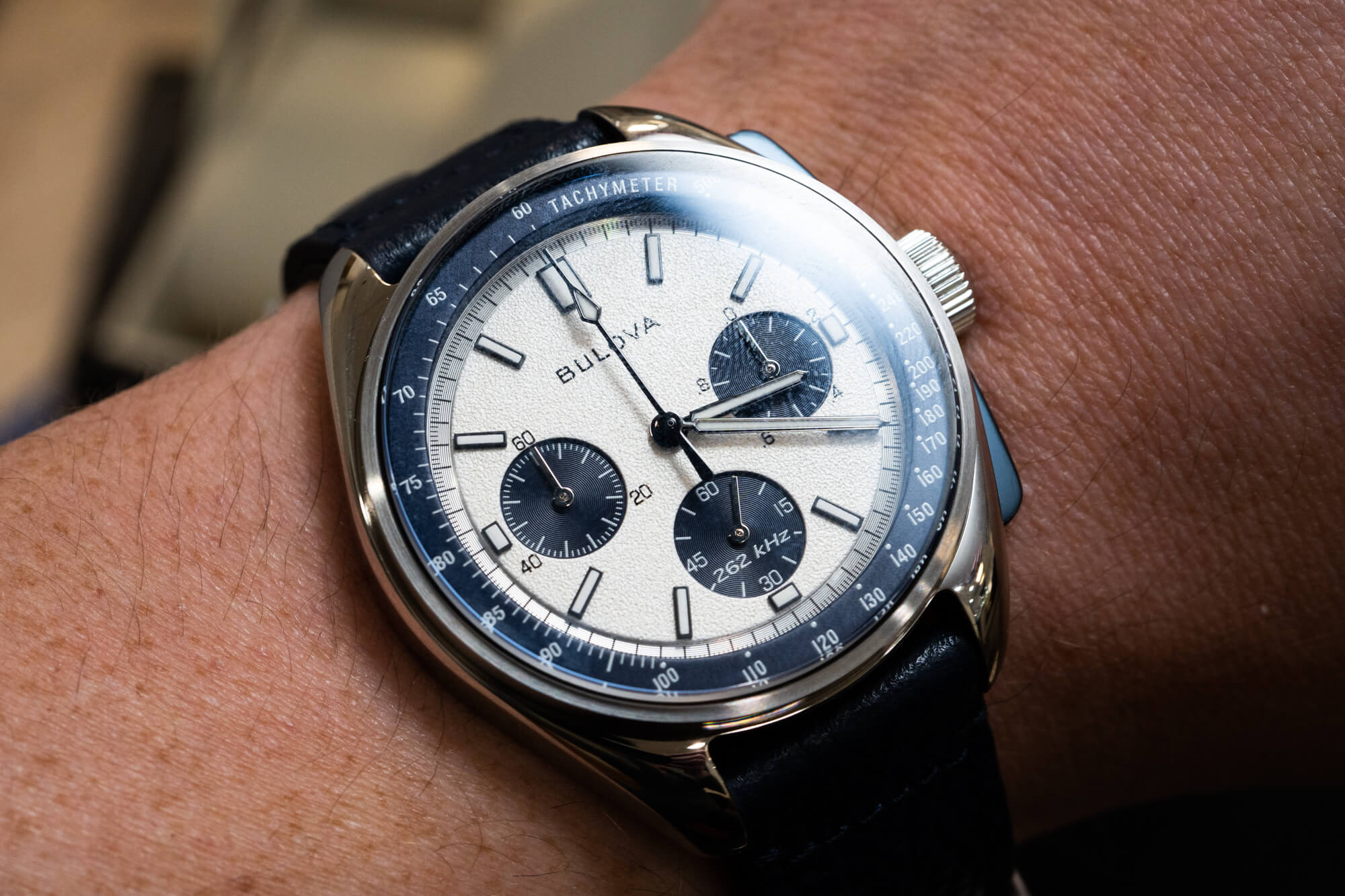
If you haven’t heard the story of the Bulova Lunar Pilot yet, allow me to briefly regale you. In 1971, NASA astronaut Dave Scott commanded Apollo 15, the fourth moon landing mission and Scott’s final spaceflight. On his wrist at the beginning of the trip was the standard-issue Omega Speedmaster. But Scott, along with some other astronauts, had received a prototype chronograph for testing from Bulova (reference 88510/01), which he opted to carry as a backup. Sure enough, after two turns on the lunar surface he noticed that the Speedmaster’s crystal had popped off. For his third EVA, Scott strapped on the Bulova. 44 years after Apollo 15, Scott’s Bulova was put up for auction (possible only because it was his personal piece, as astronauts’ Speedmasters are U.S. government property) and sold for a surprising $1.3 million. Just a year later in 2016, Bulova released the first Bulova Lunar Pilot as a recreation of Scott’s watch. Now, seven years on, after a number of iterations and a gold anniversary model, the Lunar Pilot has been further refined to its original 43.5mm case size. This new more compact rendition is being released in two new models, the original black and a blue and white panda. Bulova was kind enough to invite me to an event outside of Washington, D.C. at Murad & Co, where I got to go hands-on with the new release.

The most meaningful update to the Lunar Pilot is the reduction in case size from the first version’s 45mm-wide to a much more manageable 43.5mm, also reducing the lug-to-lug from 52mm to 50mm (the watch remains a sizeable 15mm-thick). Having owned (and sold) the 2016 model, I can attest to its presence on the wrist: while the satin, rounded surface helped mitigate the size, it was still a behemoth. These two new models—now the same size as Scott’s original chronograph—have a better feel on the wrist. The case design remains fluid, with no chamfering or beveled edges. Instead, the mid-case presents as an uninterrupted, high-polished form that seems to melt around its contours. Combining the slab sides with the polished finish, though, means that there’s nothing to visually shrink the 43.5mm profile. Yes, it’s smaller and wears better than the 45mm version, but is still a prominent piece on the wrist. Personally, I would’ve preferred the satin finish of the first version. Some excellent contrast is brought with the brushed bezel that sits atop the mid-case, with a protuberant flat sapphire crystal making this vintage-inspired watch a bit more modern and ensuring clarity at any angle.

To get the watch down to 43.5mm-wide, Bulova has been a bit creative. A close examination of prior models and these new iterations reveals that the mid-case is narrower around the bezel. Instead of simply maintaining all the same proportions and shrinking the watch down, it shaved down the sides of the mid-case in addition to shortening the lugs. What remains is the large, functional pull-out crown with the tuning fork logo, and the distinctive pushers. One thing I loved about the panda model is the col0r-matched blue pushers, which echoes the two-tone case of the gold anniversary edition. These pushers are extra-long and easy to operate, and their form complements the rest of the case.
One of the most common gripes people had with the original watch (apart from its size) was that when Bulova released a model with a bracelet, it adjusted the lug holes, so the bracelet wasn’t backwards compatible. On top of that, the leather strap with carbon fiber patterning was stiff, uncomfortable, and had a tendency to feel cheap on the wrist. The great news here is that the watches include neither of those problem straps. Instead, both models come with a brushed and polished 20mm quick-release bracelet and a color-matched leather NATO. Swaps are easy and both are comfortable, though some may have trouble sizing the bracelet with its butterfly clasp.
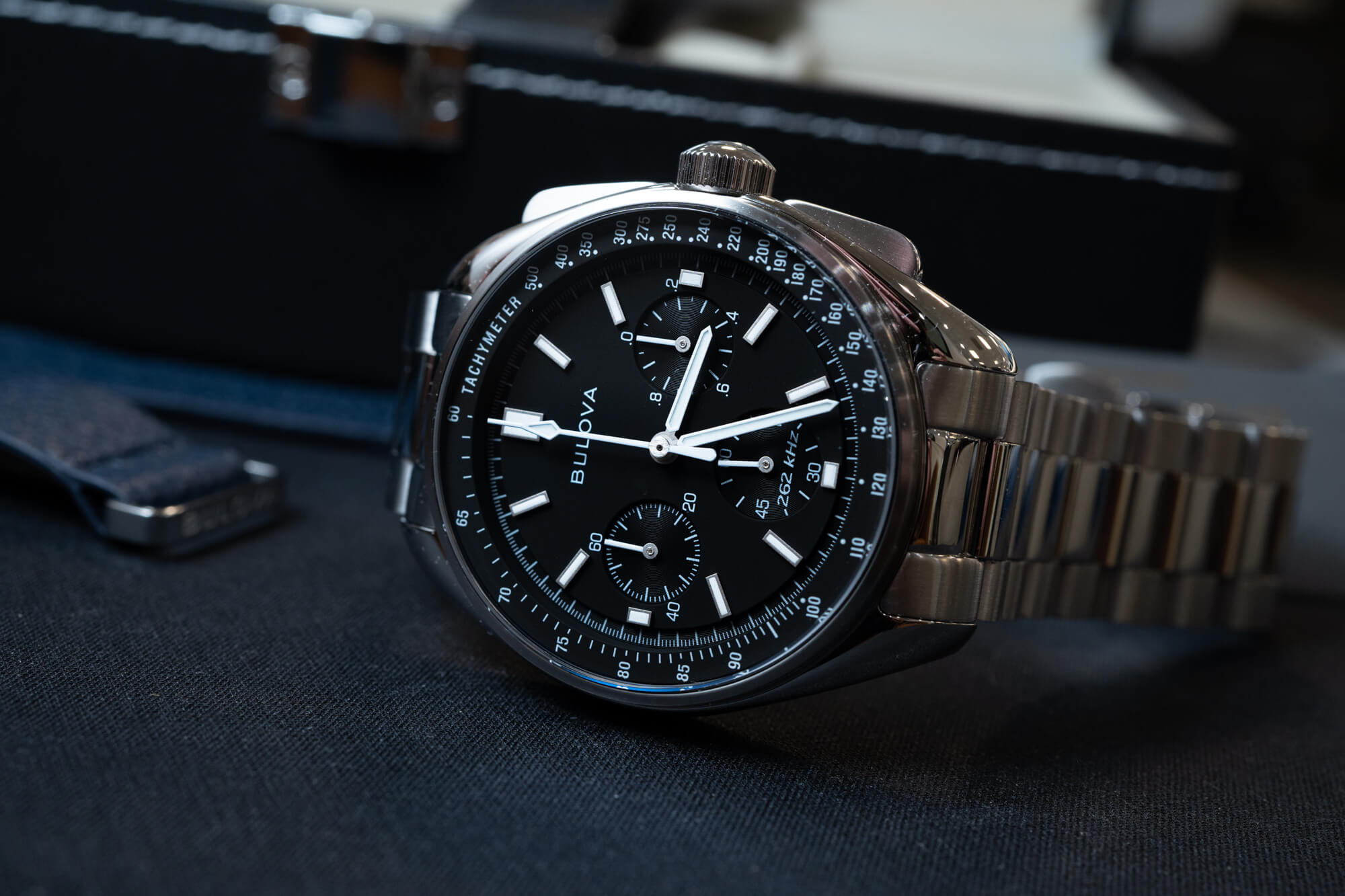
While the case has been reduced, it appears that Bulova kept the dial the same size. Like the polishing, this makes the watch’s presence on wrist a bit more pronounced. Both dials benefit from the second iteration’s dateless design with old-school Bulova branding. The three-register layout is true to Scott’s Bulova, but where his used a mechanical movement (likely a Valjoux 72) with 30-minute and 12-hour totalizers, the new versions have chronograph counters at 3 o’clock and 9 o’clock (measuring 1/10 seconds and 60 minutes, respectively) and a running seconds at 6 o’clock. Thanks to the high frequency movement (indicated by the “262kHz”), the running seconds hand has a smoother sweep than most quartz watches. Both the registers and the minute track are sunken and feature azurage, which adds a nice bit of texture. The chronograph hand moves smoothly as well, though it does not snap back when reset. The hands and the applied hour markers are treated with lume, but in my experience it is quite poor (when I owned mine, I once described it as “industry trailing”). Completing the dial is a raised tachymeter scale so tall, it seems to be trying to push its way through the sapphire.

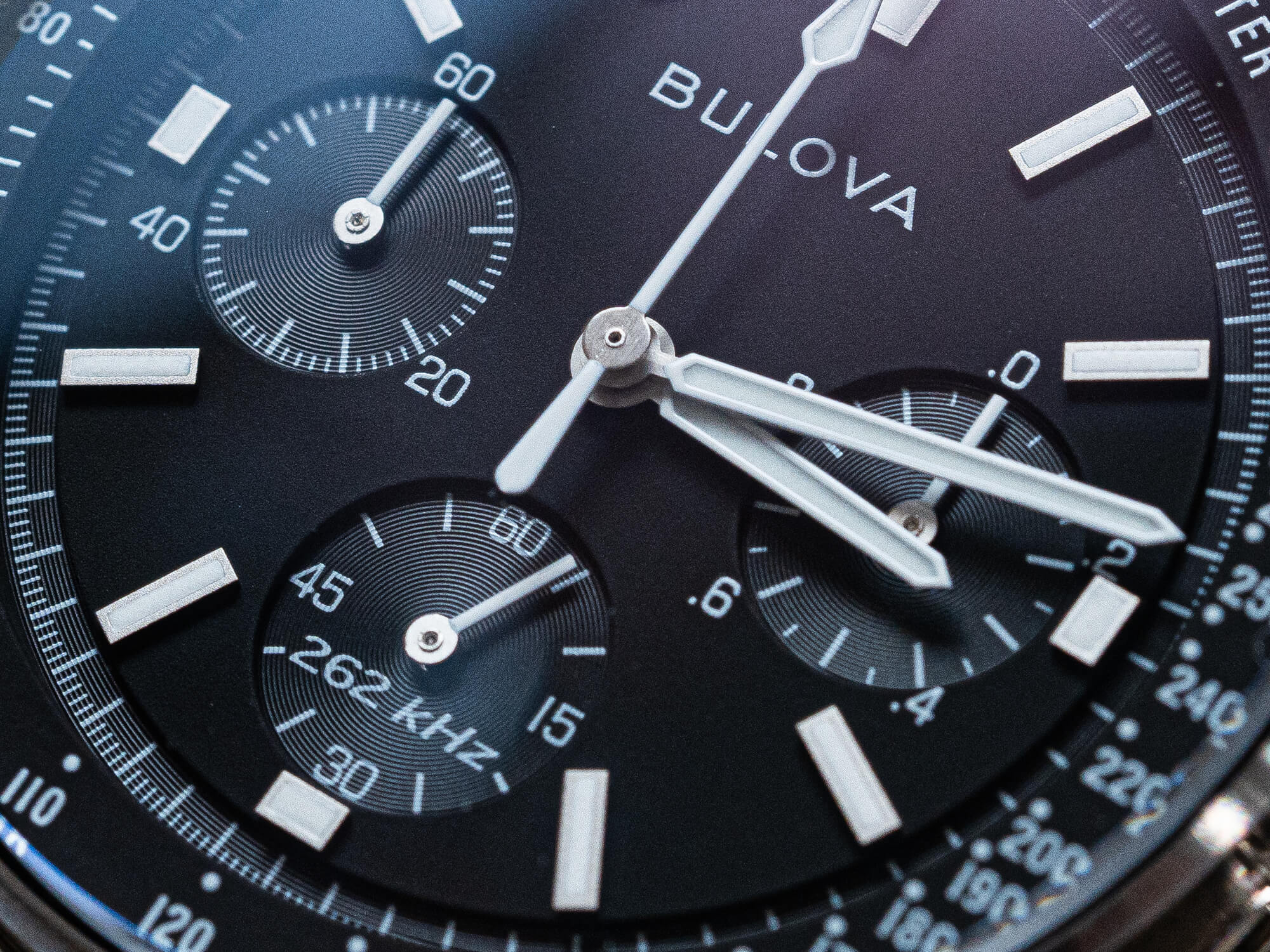
The matte black dial is identical to previous versions, with a simple white-on-black scheme that is reminiscent of another watch that went to the moon (it’s thought that in submitting the watch for NASA’s consideration, Bulova wanted to create a look with which the astronauts would already be familiar). There’s really not much more to say about that version. I can confirm that the white and blue panda variant is rather nice, with a pleasing asphalt-like dial texture and a rich blue that accents the registers and the tachymeter ring. This is the first non-limited new dial for the Lunar Pilot, and it’s a breath of fresh air against the stark dials that preceded it. Admittedly this dial, too, is similar to a handful of Speedmasters, namely the CK2998 LE and the Silver Snoopy Award 50th Anniversary model. While this time around Bulova can’t argue it was trying to help the astronauts, one could argue that Omega releases so many SKUs that it’s hard to make a three-register chronograph dial that won’t draw comparisons (I’m reminded of the South Park episode “Simpsons Already Did It”).
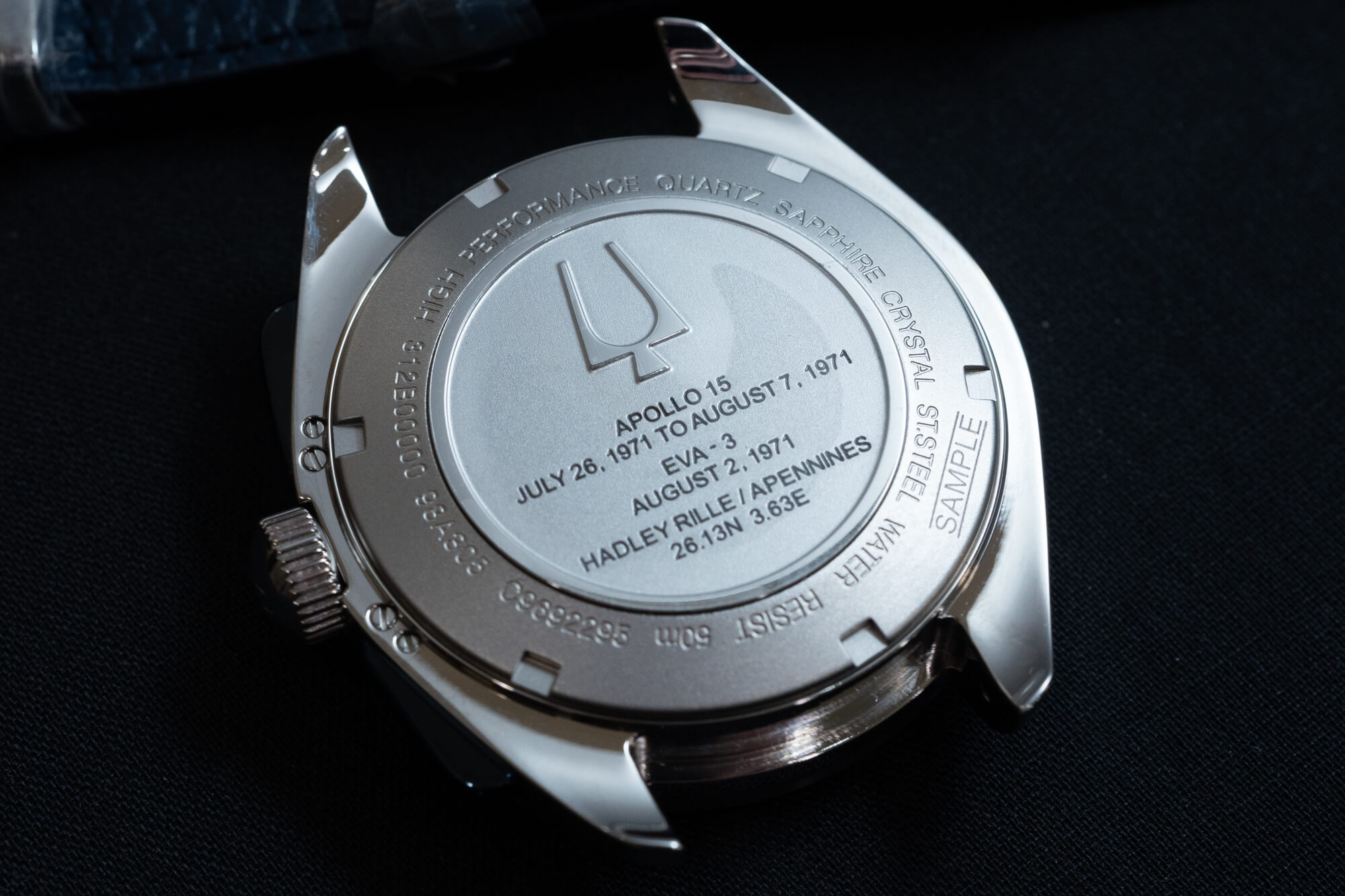
The solid screwdown caseback helps to ensure 50m of water resistance and features a broad array of information. A huge tuning fork logo is joined by details about the Apollo 15 mission, and the specific EVA during which Scott wore the original watch. Under the caseback is Bulova’s in-house High Performance Quartz chronograph movement, which features a three-pronged crystal vibrating at 262kHz for an impressive accuracy of -10/+10 seconds per year. As mentioned above, the immediate benefit of this movement is a smoother running seconds sweep and completely smooth chronograph hand. My experience of the movement as an owner was without issue, and I regularly used the watch to set my mechanical timepieces.
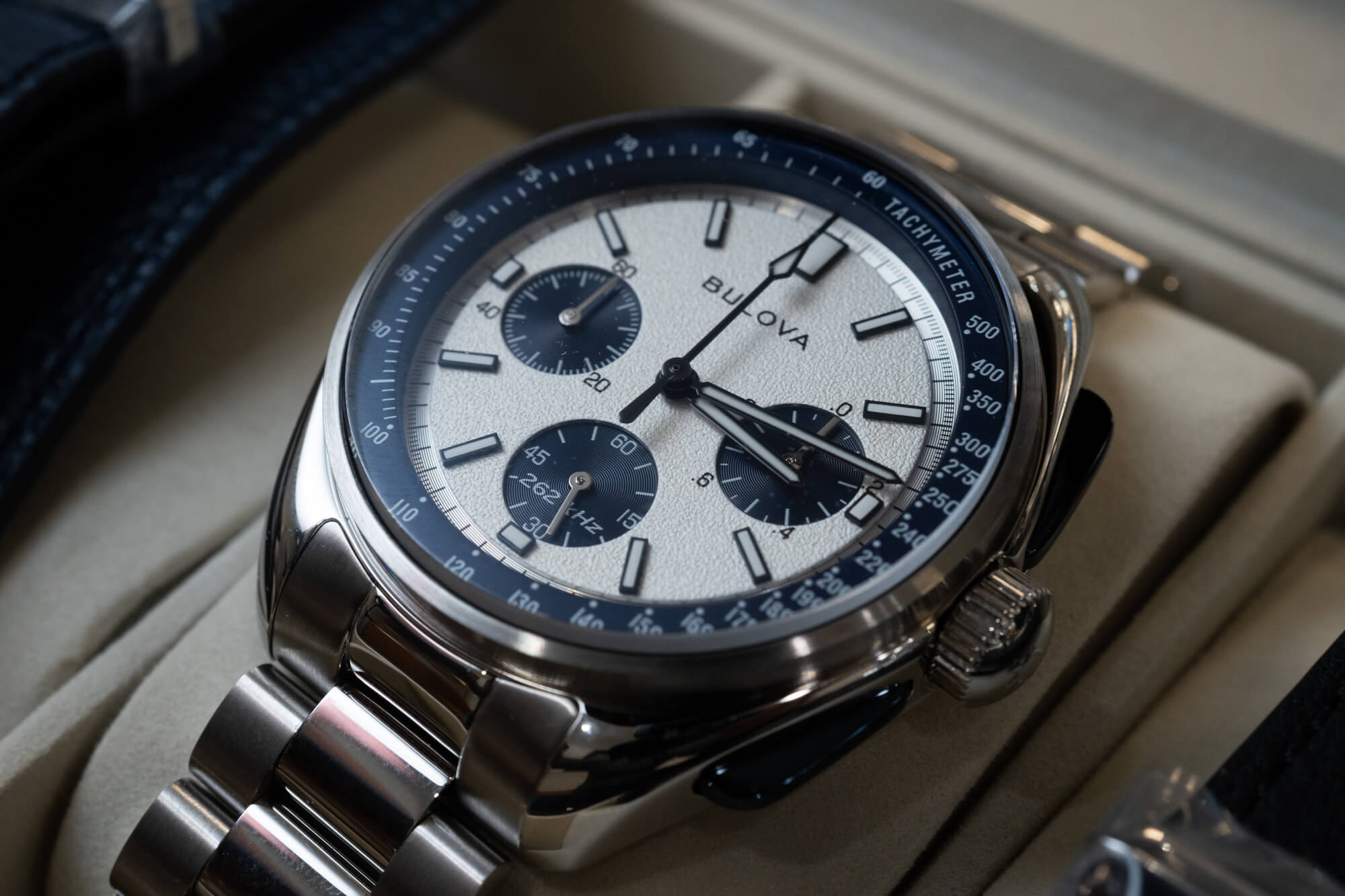
This release is going to make plenty of people very happy. Those that had been hoping for a smaller (and more accurate) recreation of Dave Scott’s Bulova chronograph will have their wishes answered and their patience rewarded by the smaller case. Those who love a good panda dial (which as far as I can tell is everyone) are in for a treat, too. While some design details didn’t tickle my particular fancy—namely the polished cases, but I also wish they’d improve the lume—on balance, these new models are a success. Bulova is demonstrating a willingness to respond to consumers and expand on the Lunar Pilot collection, so if nothing else, this release builds excitement for the collection’s next releases. The new Bulova Lunar Pilots are sold in a box set with both the bracelet and the strap and are priced at $895 USD as of press time. For more information, please visit the brand’s website.

